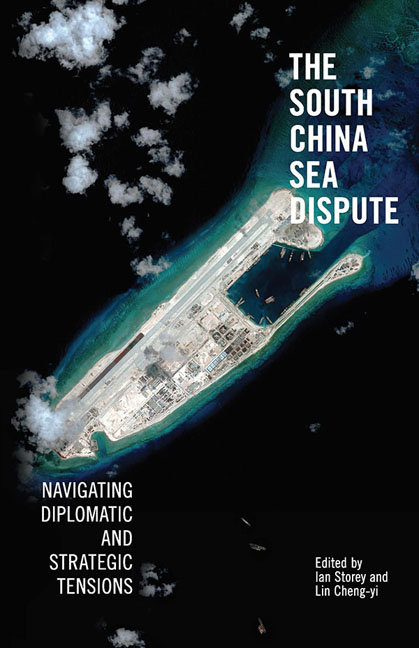Book contents
- Frontmatter
- Contents
- About the Contributors
- 1 Introduction
- 2 Untangling a Complex Web: Understanding Competing Maritime Claims in the South China Sea
- 3 China Debates the South China Sea Dispute
- 4 Taiwan's Evolving Policy towards the South China Sea Dispute, 1992–2016
- 5 The South China Sea: Primary Contradictions in China–Southeast Asia Relations
- 6 Rising Tensions in the South China Sea: Southeast Asian Responses
- 7 The Philippines and the South China Sea Dispute: Security Interests and Perspectives
- 8 A Vietnamese Perspective on the South China Sea Dispute
- 9 The South China Sea Dispute: Options for Malaysia
- 10 The United States and the South China Sea: Front Line of 228 Hegemonic Tension?
- 11 The South China Sea Dispute in U.S.–ASEAN Relations
- 12 Japan and the South China Sea Dispute: A Stakeholder's Perspective
- 13 Conclusion
- Index
1 - Introduction
Published online by Cambridge University Press: 19 May 2017
- Frontmatter
- Contents
- About the Contributors
- 1 Introduction
- 2 Untangling a Complex Web: Understanding Competing Maritime Claims in the South China Sea
- 3 China Debates the South China Sea Dispute
- 4 Taiwan's Evolving Policy towards the South China Sea Dispute, 1992–2016
- 5 The South China Sea: Primary Contradictions in China–Southeast Asia Relations
- 6 Rising Tensions in the South China Sea: Southeast Asian Responses
- 7 The Philippines and the South China Sea Dispute: Security Interests and Perspectives
- 8 A Vietnamese Perspective on the South China Sea Dispute
- 9 The South China Sea Dispute: Options for Malaysia
- 10 The United States and the South China Sea: Front Line of 228 Hegemonic Tension?
- 11 The South China Sea Dispute in U.S.–ASEAN Relations
- 12 Japan and the South China Sea Dispute: A Stakeholder's Perspective
- 13 Conclusion
- Index
Summary
Between early May and mid-July 2014 the state-owned China National Offshore Oil Corporation (CNOOC) deployed its largest and most modern oil rig, Hai Yang Shi You-981 (HYSY-981), into Vietnam's claimed exclusive economic zone (EEZ). CNOOC's action not only sparked a major crisis in Sino–Vietnamese relations, but also arguably raised tensions in the South China Sea to their highest point since the dispute first came to prominence in the late 1980s. The HYSY-981 Incident also reinforced negative trends which have dimmed the prospects of a negotiated settlement of the dispute and highlighted the limited effectiveness of attempts to more effectively manage the conflict both by the Southeast Asian claimants (Vietnam, the Philippines, Malaysia and Brunei) and China on a bilateral basis, and by the Association of Southeast Asian Nations (ASEAN) and the People's Republic of China (PRC) using a multilateral approach.
Together with the Sino–Japanese confrontation over sovereignty of the Senkaku/Diaoyu Islands in the East China Sea, the South China Sea dispute currently sits at the top of Asia's security agenda. Due to rising levels of nationalism over ownership of the disputed atolls, more strident assertions of sovereignty by the various claimants, growing competition over maritime resources, worsening geopolitical rivalries among the Great Powers and the rapid modernization of regional armed forces, maritime disputes are likely to remain the most important potential areas of conflict in Asia for the foreseeable future.
This Introduction provides an overview of the central aspects of the South China Sea dispute and is divided into seven sections. After this introductory section, the second part focuses on the geopolitical significance of the South China Sea and how the problem has increasingly become an area of contention between China and the United States. The third part identifies the reasons why tensions have been rising over the past several years. Part four looks at how the absence of political will among the claimants stands in the way of a legal or negotiated settlement. The fifth section examines how ASEAN and China have attempted to better manage the dispute with mixed success. Part six assesses why a continuation of the status quo could endanger the peace, stability and prosperity of the Asia-Pacific region and beyond. The final section provides a brief introduction to the rest of the chapters in this volume.
- Type
- Chapter
- Information
- The South China Sea DisputeNavigating Diplomatic and Strategic Tensions, pp. 1 - 20Publisher: ISEAS–Yusof Ishak InstitutePrint publication year: 2016

